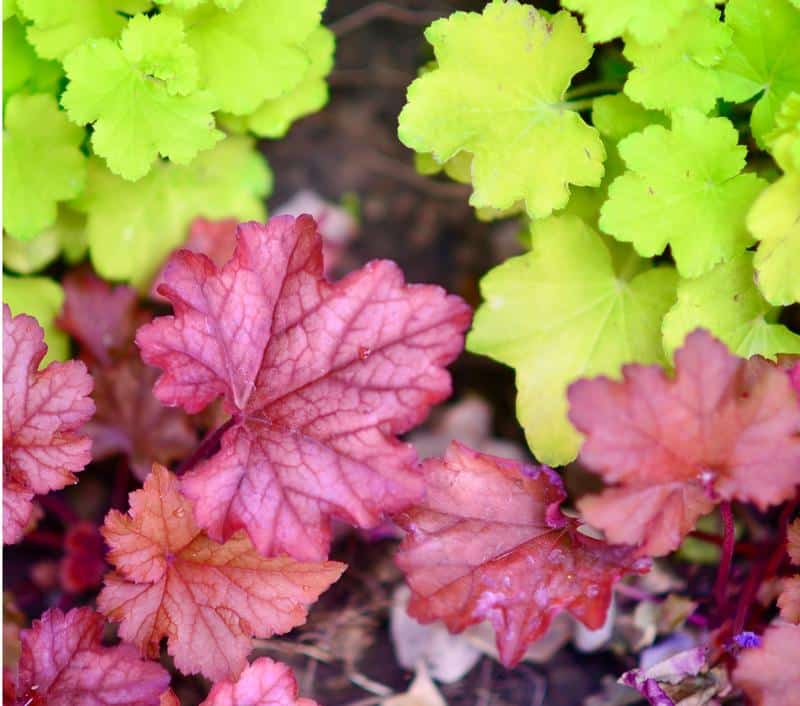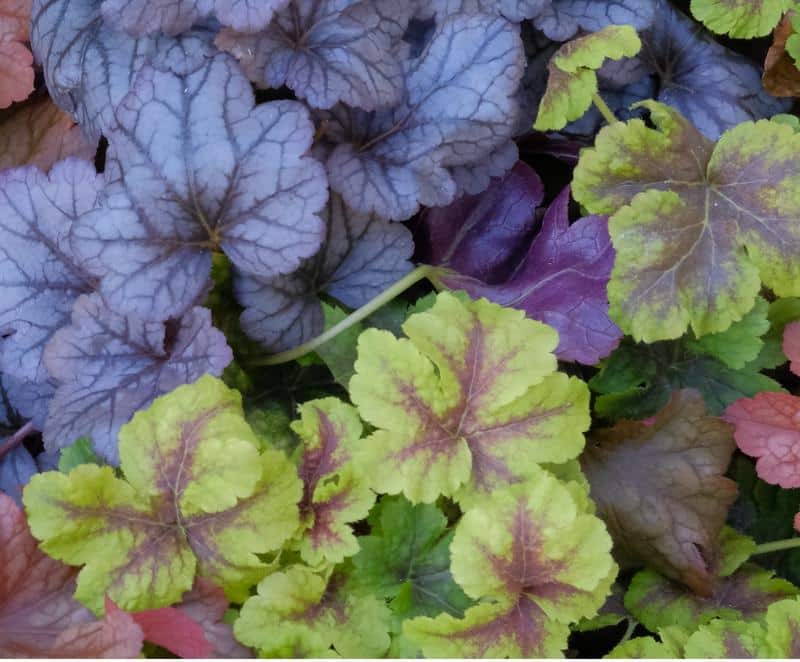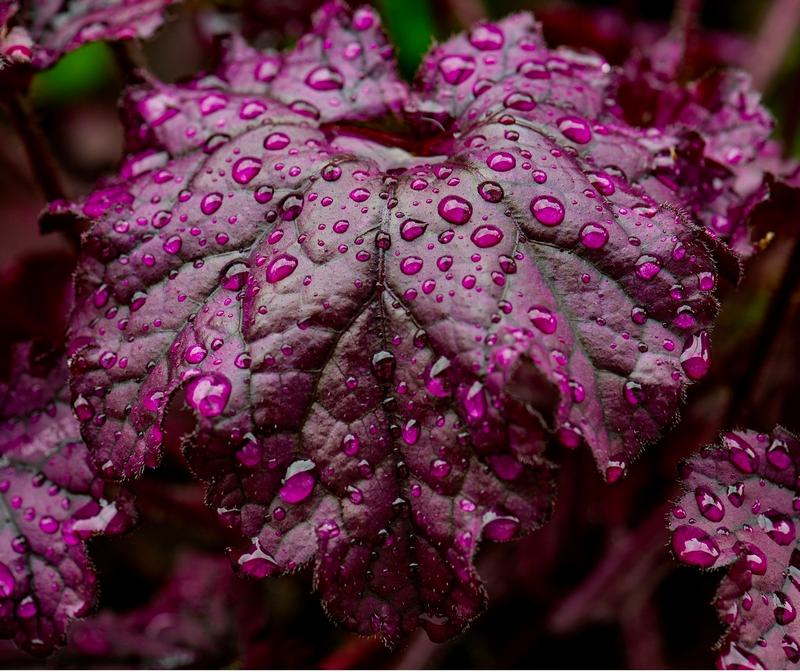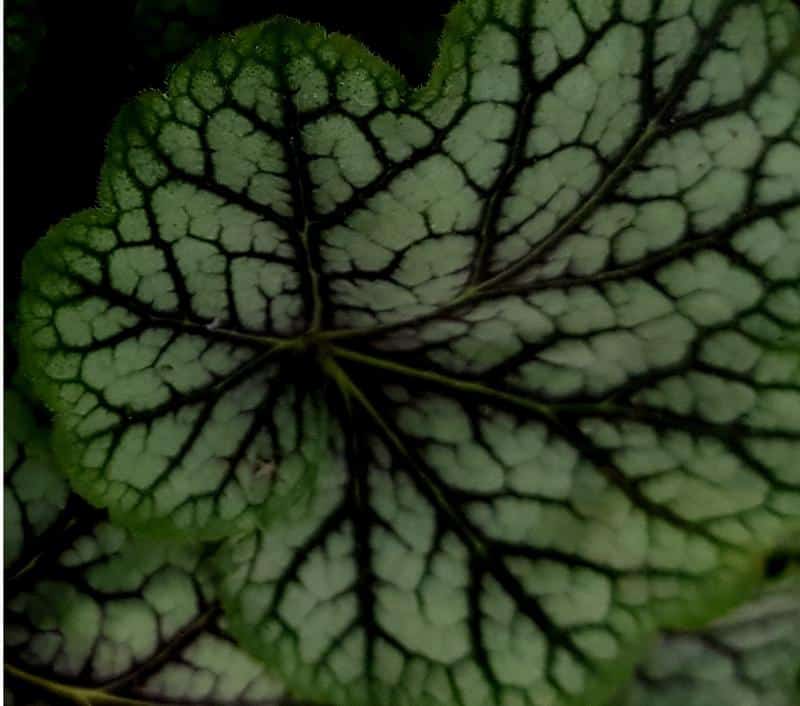Are Coral Bells Toxic to Dogs? Is Heuchera Poisonous to Dogs?
Are Coral Bells toxic to dogs? In this article, we’ll teach you everything you need to know about if Coral Bells are safe for dogs and what to do if your dog ate Coral Bells (also known as Heuchera). We’re then going to explain the two commands that will ensure your dog behaves around Coral Bells and other potentially toxic plants.
Next, we’ll cover more things you should know about Coral Bells and dogs, such as how to keep dogs away from Heuchera using barriers and other methods. Finally, we’ll finish up by instructing you on how big Coral Bells get as well as other things you should know about growing these beautiful perennials in a home with dogs. Keep reading!
Are Coral Bells Toxic to Dogs?

Coral Bells are not toxic to dogs. These perennials (scientifically known as Heuchera), while a popular choice for many gardeners, do not pose a significant health risk to dogs if eaten. However, it is always a good idea to encourage safe behaviors around all plants to prevent any potential issues, such as simple digestive upset or accidental ingestion of other harmful plants.
Is Heuchera Poisonous to Dogs?
Heuchera is not poisonous to dogs. Although ingestion may cause minor gastrointestinal upset due to the novelty for their digestive systems, the plant does not contain any known toxic compounds that would harm your pet. As always, monitor your pet for any unusual behavior and contact your vet if you’re concerned.
Train the “Leave It” Command
Training the “Leave It” command can be particularly useful for preventing your dog from showing too much interest in your Coral Bells, or any other plants in your garden. This command teaches your dog to withdraw their attention from an object when told to, effectively dissuading them from nibbling at your plants. Here’s how to train it:
- Hold a treat in your closed hand and present it to your dog. Say “Leave it.”
- Wait until your dog stops sniffing and licking your hand. As soon as they do, give them a treat from your other hand.
- Repeat this process until your dog moves away from your hand when you say “Leave it.”
- Now you can practice with different objects, gradually moving to practicing around plants.
Train the “Drop It” Command
The “Drop It” command is a great backup tool that could help if your dog already has something unsafe in their mouth, like a piece of a plant that they shouldn’t have. It can act as a safety net if the “Leave It” command doesn’t work in time. Here’s a simple way to teach your dog this command:
- Start by playing a tug game with your dog. Once you have their interest, stop tugging and say “Drop it.”
- Wait for your dog to let go of the toy. As soon as they do, praise them and give them a treat.
- Practice this command frequently. Over time, your dog will associate the command with the action.
While Coral Bells are not toxic to dogs, they should still be trained not to eat them to ensure their safety around plants that could be harmful. These commands will do that, but it’s important to remember that the underlying behavioral issues (curiosity, anxiety, boredom, etc.) that were causing all of this to begin with will still be present.
And until you address those, any positive changes you see are only going to be temporary.
“Well, how do I make these changes last?”
By getting your dog to truly choose to follow your direction, that’s how. I tried many times to write out how you can do that before deciding it made more sense to just link you to the free video series that explains it better than I’d ever be able to.
The series is by a man named Dan who is one of the world’s leading dog obedience trainers. In it, he teaches you how to put an end to things like your dog eating Coral Bells and all other misbehavior using his fast and easy-to-follow methods.
In the first video, Dan will reveal to you why the two most common methods of dog training only doom you to failure. You can watch the video now by clicking here. Follow the proven system he’ll show you in his series and you’ll never have to spend another second worrying about your dog eating Heuchera ever again!
Are Coral Bells Safe for Dogs?

Coral Bells are safe for dogs. These plants, also known as Heuchera, do not contain any known toxic compounds that could harm your dog if ingested. Nevertheless, it’s always recommended to supervise your dog around plants and discourage any behaviors that could lead to the ingestion of plant material.
My Dog Ate Coral Bells, What Do I Do?
If your dog ate Coral Bells, there’s generally no cause for major concern because they are not considered toxic. However, any plant matter can potentially cause gastrointestinal upset in dogs, especially if consumed in large quantities.
Monitor your dog for any signs of distress, such as vomiting or diarrhea, and consult your vet if you notice any unusual behavior.
Dog Eating Coral Bells: How to Prevent
Prevention is the best approach to ensure your dog doesn’t eat Coral Bells or any other plants. Train your dog to understand commands like “leave it” and “drop it”. Learn both now in the first section. This gives you control over their behavior around plants. In addition, always supervise your pet when they’re around plants
A fenced-off area for plants, particularly those you’re unsure about, can also be a good preventative measure.
What Attracts Dogs to Coral Bells?
Dogs might be attracted to Coral Bells due to their curiosity or a desire to chew. The texture and scent of the plant might also be appealing to some dogs. Furthermore, if your dog is bored or lacks sufficient stimulation, they might start nibbling at plants. Therefore, it’s essential to provide enough exercise and mental stimulation for your dog to prevent such behavior.
In conclusion, while Coral Bells are generally safe for dogs, it’s still important to discourage your dog from eating plants. Training, supervision, and providing adequate mental and physical stimulation are the key to preventing your dog from nibbling on your plants, ensuring their well-being and safety.
You should get this problem handled now as it will also keep your dog safe around other types of plants. You then won’t have to worry about things like are Ranunculus poisonous to dogs, are Camellias poisonous to dogs, are Dahlias poisonous to dogs, or are Peony poisonous to dogs.
Coral Bells and Dogs

Coral Bells, or Heuchera, are generally considered safe for dogs, not containing any known toxins that could pose a threat. However, it’s still important to manage your dog’s interaction with these plants to prevent any potential ingestion of plant material.
How to Keep Dogs Away From Heuchera
Even though Coral Bells are not toxic to dogs, you might still want to prevent your dog from disturbing these plants. Implementing barriers is one practical way to achieve this. Fencing or plant cages can keep inquisitive dogs at a distance. These barriers don’t have to be unsightly; many aesthetically pleasing options can complement your garden’s appearance.
Raised garden beds or elevated plant pots can also serve as effective barriers, making these plants inaccessible to your pets. Prioritizing your pet’s safety and preserving your plant collection can indeed coexist with these measures.
Training Your Dog Around Plants
Training is another effective tool for managing your dog’s behavior around plants. Commands like “leave it” and “drop it” can prevent your dog from getting too close to your plants or even ingesting them. Learn both now in the first section.
These commands are particularly useful in situations where physical barriers are impractical or not preferred.
Safe Plant Alternatives for Dogs
If you’re particularly concerned about your dog’s interaction with plants, consider opting for plants known to be safe for dogs. For instance, pet-friendly flowers like sunflowers, roses, or petunias can add beauty to your garden without posing any risks to your dog. As always, do your research to ensure the safety of any plant you introduce into your dog’s environment.
In summary, while Coral Bells are safe for dogs generally, precautions should still be taken to prevent dogs from disturbing or potentially ingesting these plants. Implementing barriers, training your dog, and considering safer plant alternatives are all effective ways to ensure the well-being of both your pets and plants.
How Big Do Coral Bells Get?

Coral Bells, scientifically known as Heuchera, typically grow to a size of about 12 to 36 inches in height and 12 to 18 inches in width, making them a moderate-sized plant suitable for many gardens.
Heuchera: Sun or Shade?
Coral Bells are highly versatile plants and can thrive in both sun and shade. However, they prefer partial shade, particularly in hotter climates. Too much sun exposure can cause their leaves to burn, while too little can lead to reduced vibrancy of leaf colors.
What Do Coral Bells Look Like?
Coral Bells are recognized for their unique appearance. They boast a mound-like form with heart-shaped or lobed leaves that vary in color from green to purple, red, orange, and almost black. During late spring to early summer, they produce small, bell-shaped flowers on tall stalks, contributing to their name.
How to Grow Coral Bells in Pots
Coral Bells adapt well to container gardening. Choose a pot that’s large enough to accommodate the plant’s size at maturity and ensure it has adequate drainage. Use well-draining soil and water the plant regularly but avoid waterlogging. Position the pot in a place that receives partial shade for best results.
Do Coral Bells Spread?
Yes, Coral Bells are known to spread, especially in favorable growing conditions. They typically form clumps that slowly increase in size over time. However, they’re not invasive and can be easily managed with regular maintenance.
How Long Do Coral Bells Bloom?
Coral Bells bloom from late spring to early summer, usually for a period of about a month. The bell-shaped flowers provide a delightful visual and can attract pollinators to your garden.
Are Coral Bells Perennials?
Coral Bells are perennials. This means they live for more than two years, and often much longer. They are known for their hardiness, surviving through various weather conditions, and providing year-round color to the garden.
In conclusion, Coral Bells are moderate-sized, versatile perennials that add beauty to any garden space. They flourish under various light conditions, have a unique and attractive appearance, and adapt well to different growing conditions, including pots.
They spread gradually and bloom for a decent period, enhancing the aesthetic appeal of your garden. Learn to control your dog around them by going back to the first section now.
I’m sure it’s a relief to know what to do with your Coral Bells and dogs now, so I’ll let you get started. Good luck, and thanks for reading our article “Are Coral Bells Toxic to Dogs? Is Heuchera Poisonous to Dogs?”





